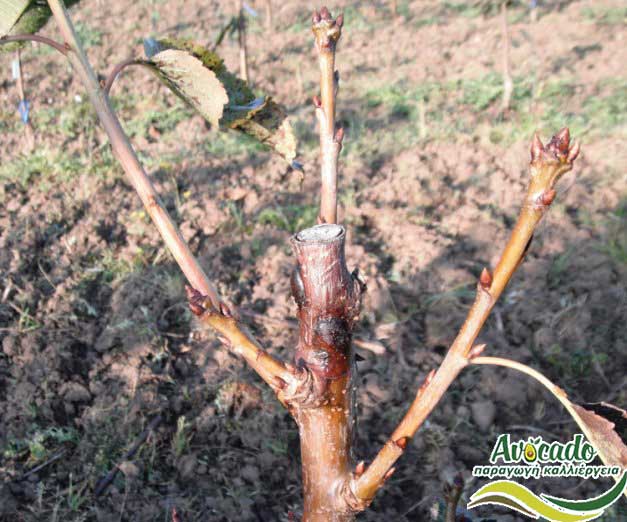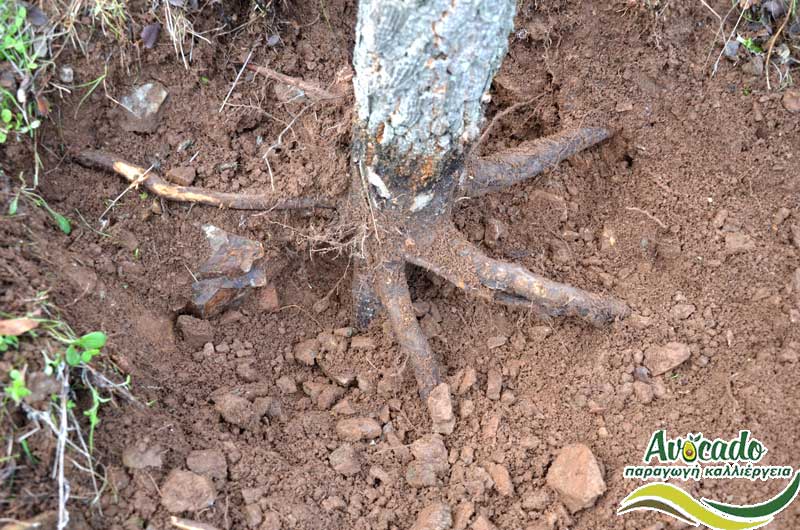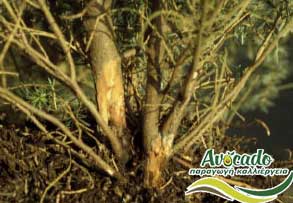Phytophthora cinnamomi

Phytophthora cinnamomi soil mold. It is contaminated with mold soil that produces an infection. Causing a condition in plants called “root rot” or “dieback”. Plants diseased by this pathogen are one of the most common diseases affecting plants around the world. It is present in more than 70 countries worldwide.

Scientific classification processing
Ζωολογική διαίρεσις: Heterokonophyta
Τάξη: Oomycota
Σειρά: Peronosporales
Οικογένεια:Peronosporaceae
Γένος: Phytophthora
Είδος: P. cinnamomi
Διωνυμικό όνομα: Phytophthora cin/omi
Ποικιλίες:
Ph/ra cinnamomi var. cinnamomi
Ph/ra cinnamomi var. parvispora
Phytophthora ci/mi var. robiniae

Reception area and symptoms
The range of hosts for Phytophythora cinnamomi is very wide. It is distributed all over the world and causes disease to hundreds of hosts. The disease affects a number of economic groups. Like food crops like avocado and pineapple, and can cause gooseberry rot. Of pine pines, loblolly pines, azaleas, camellia, silicon and many other trees and wood carvings.
It is a root pathogen
Causing root rot and death of host plants. Some symptoms include: wilting, reduced fruit size. Decreased yield, rot, vaginal exudation, necrosis, leaf chlorosis, leaf curl and stems. Another symptom is that it can cause the sprouts to be removed. And it can affect the erosion of roots in shoots. Older plants may show no symptoms or show only mild. Although they have severe root rot.
Life cycle and effects on plants
Phy / ora cinnamomi lives in soil and plant tissues. It can take different shapes and move in the water. In times of harsh environmental conditions, organisms become dormant chlamydia seeds. When environmental conditions are right, chlamydia seeds germinate, producing mycelium (or textures) and sporangia. The sporangia mature and release the zoospores. They infect the roots of plants by entering the root behind the tip of the root.
The Zoospores …
They need water to swim in the ground, so the contamination is most likely in wet soils. Mycelium grows on all carbohydrates and nutrients, destroying the structure of root tissues. By “ejaculating” the root and preventing the plant from absorbing water and nutrients. Asparagus and chlamydia are formed in the mycelium of the infected root and the cycle of infection continues to the next plant. Early symptoms of infection include wilting. The yellowing and retention of the dried foliage and the dark color of the root. Infection often leads to plant death. Especially in dry summer conditions when the plants can be under water pressure.
About the thriving environment
Phytophthora ci / mi soil mold is a soil pathogen first reported in tropical and subtropical countries, but has now been found to survive and grow in cooler countries. P. cinnamomi spreads as zoospores and / or chlamydospores in the soil and the water is placed in favorable conditions, such as hot and humid conditions. Some propagation pathways include: plants or plant parts, such as mycelial growth through root contact and spore dispersion, which can travel long distances. inverted soil and debris moving down into the underground or surface water flow, such as rivers or irrigation water.
Machinery and equipment
In wet ground stuck to vehicles or equipment the soil, sand and gravel. Wild and wild animals are also known to contribute to the spread of the disease. A recent study of wild boar found that they have the ability to carry this pathogen into their digestive system. Humans also affect the spread of this disease in human activities, such as timber harvesting, mining, walking and the road.
Sexual reproduction
It is a diploid and heterothalic species with two types of mating, A1 and A2. Sexual reproduction in heterogeneous Phytophthora species usually occurs when opposite mating gametes interact in the host tissue. This interaction leads to the formation of oospores that can survive for long periods of time inside or outside the host. It is also capable of self-fertilization (ie it can be homosexual). Type A2 cultures combined with Phytophthora cin / omi can induce sexual reproduction. That is, by exposure to hydrogen peroxide or mechanical damage.
In the wild
When the removal of phytophthora spreads to natural plant communities, it kills many susceptible plants. Resulting in the permanent reduction of biodiversity and the disruption of ecosystem processes. It can also change the composition of the forest or local plant community by increasing the number of hardy plants. Reducing the number of vulnerable plant species. Native animals based on susceptible plants for survival are declining in number. Φ eliminated from areas infected with Phytophthora dieback. Damage to forests suspected of being caused by Phytop / ora cinnamomi was first recorded in the United States. About 200 years ago.
Examples of infections in parts of the world
Infection is the cause of sudden death of some native tree species. Including American chestnut, Littleleaf pine disease (Pinus echinata). Disease of Christmas Trees in Gooseberry Nursery (Abies fraseri), While Oaks Are Affected in South Carolina Texas. A water landscape in the Stirling region of Western Australia, with a lowland polluted valley in the middle of the ground. In Australia, where it is known as phytophthora dieback, dieback, jarrah dieback or cinnamon. It also infects some natural plants, causing damage to forests and clearing habitats for small mammals.
Particular concern
They cause infections and losses of large forest areas and soils. Supporting endangered species in the southwest corner of Western Australia. Many plants of the genera Banksia, Darwinia, Grevillea, Leucopogon, Verticordia and Xanthorrhoea are susceptible. This in turn will affect the animals that depend on these plants for food and shelter. Such as Norwegian pygmy (Cercartetus concinnus) and honeysuckle (Tarsipes rostratus).
Fruit and Phyto / ra cinnamomi
In addition to damaging indigenous forests, it can also infect fruit trees. Walnuts and other ornamental plants. Research has shown that it can infect mosses. Ferns, Cyclades, conifers, pebbles, grasses, lilies. And a large number of species from many families with dicotyledons. This is a remarkable range for a phytopathogenic plant and underscores the effectiveness of Phytophthora ci / mi as an aggressive primary pathogen. The team of invasive species includes this species in the “100” list. “One of the worst invasive alien species in the world.”
In gardens and crops
The destruction of Phytophthora affects a large number of common garden species, indigenous and horticultural crops. This list of delicate plants includes cinnamon, roses, azaleas and fruit trees. Since there is no known cure, once the disease has been introduced into a garden, it cannot be easily eradicated. And it can be a major problem.
The protection protocols
To prevent the disease from entering gardens include the supply of plants. From areas that have not been infected. (‘No local shrubs’), using sterile mixtures and using only a properly composted mattress. Transplanting established plants from one garden to another can also spread the disease. Propagation by seeds and cuttings is less likely to transmit the disease. Because there is no soil transported by stock.
Many small nursery stations …
They are accredited under the Nursery Industry Australia Accreditation Scheme (NIASA). They use healthy practices to prevent Phytophthora dieback from contaminating their stock. Hygienic practices prevent the spread of the disease in contaminated mixture, plant material and water sources. Other precautions include upgraded benches, regular pesticide removal checks and quarantine.
Plants usually die
By removing the pesticide at the end of the summer, when the plants are under the most stress. Therefore, removal of phytophthora can often be confused with the symptoms of drought. Removal of Phytophthora will affect a number of different susceptible plants, but will not affect resistant plant species. If the disease is suspected, a possible mode of transmission of the disease must be identified. The best method of confirming the presence of the disease is to test soil samples. Or plants from a diagnostic lab.
Phyt / hora cinnamomi mold soil. The control…
Existing infections with Phytophthora include injecting or spraying plants with phosphite (a fungicide). Using a well-compressed mixture, and using pre-planting techniques such as sunbathing or bio-smoking. The rotten compound is particularly suppressive to remove phytophthora and can prevent the infection of healthy plants. It is very important to avoid the spread of contaminated soil, plants or water. Infected areas can be exposed or formed with resistant plant species that are not affected by the disease.
Impact on avocado cultivation
Cinnamomi is the main cause of damage to avocado trees. It is commonly known as “root odor” among avocado farmers. Since the 1940s, various varieties of avocados have developed resistance to rot to minimize tree damage. Damaged trees generally die or become unproductive within three to five years. A 1960 study in the Fallbrook area of California found higher levels of avocado root rot. In soils with poorer drainage. And higher clay content.
Treatment with phosphorus fungicides
Phosphates (phosphonates), such as potassium phosphates, have been used as biodegradable fungicides. To protect plants from phytophthora removal. It is usually applied as potassium phosphate. Calcium and magnesium phosphates can also be used. No treatment will eliminate the loss of pesticides. Including phosphorus treatments, although a comprehensive approach can control the spread and effect of the disease. An integrated approach can combine strategic treatment with phosphorous, fumigants. Access control, correction of drainage problems, removal of host plants and implementation of excellent hygiene protocols.
Phosphorus is not toxic ….
For humans or animals. Its toxicity has been compared to that of table salt. Phosphorus has minimal environmental impact. When phosphorus is sprayed on plant foliage, it is applied at a very low rate. Phosphorus must enter the plant’s water transport system to be effective. This can be done by injecting phosphate material into the trees. Or by spraying the leaves of plants with squid. Phosphate protects a plant from infection by destroying phytophthora. It can also help a unit recover if it is already infected.
Management
P. cinnamomi has a wide range of hosts that make it difficult to control the spread of the disease. The greatest impacts tend to be in areas with a Mediterranean climate. Which receive an average annual rainfall of over 600 mm, such as the islands of Southeast Asia and Australia. [13] The pathogen appears to be able to survive in asymptomatic plants or in tolerant plants. Some possible methods of cultural management include: drainage, raised plant beds. Crop rotation, solar soil treatment, soil conditions and barrier formation.
Sewerage is vital to management.
This means using clean seed and stock as well as well-drained sandy soils with low pH. This also means that soil or water is not allowed to move from contaminated areas. Using external clean containers and equipment, install watertight drains to prevent surface discharge. Source: https://en.wikipedia.org/wiki/Phytophthora_cinnamomi.
